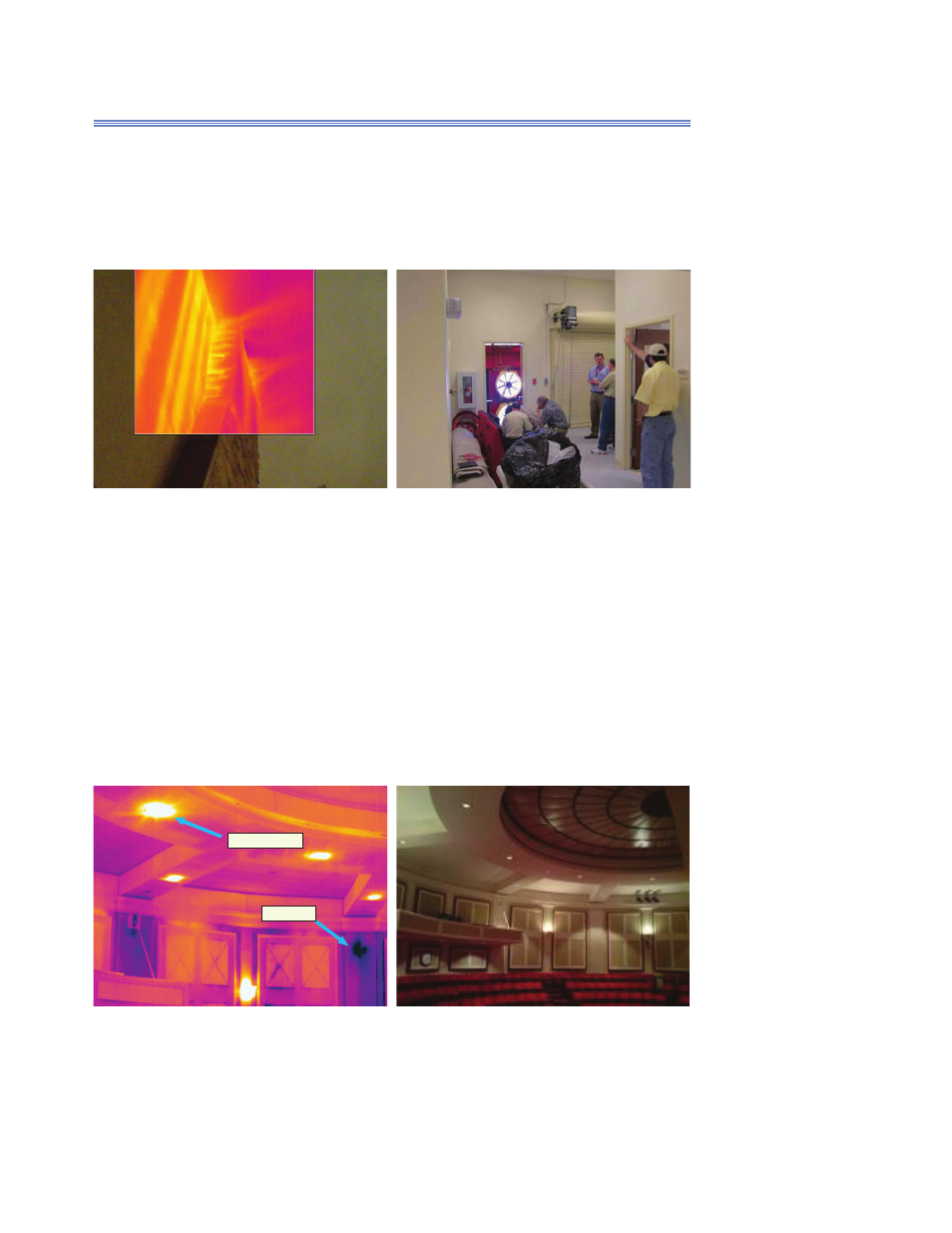G.7 energy loss in buildings – Retrotec USACE User Manual
Page 345

Appendix G G15
G.7 Energy Loss in Buildings
Energy losses in buildings can be roughly divided into
Losses that occur due to a fi nite thermal resistance of building envelopes
■
Losses that occur due to air fl ows, including controlled (caused by venti-
■
lation) and uncontrolled (caused by air leaks) air fl ows
Figure G15. Heat transfer by convection is observed in this IR thermogram during a pressure
test as heated air fl ows over the chimney and ceiling surface, locating extensive air leaks
around the chimney of this building. (Images from BCRA.)
Part of the energy used in buildings is recovered as heat. Indoor air temperature,
radiant heat fl uxes, airfl ows, moisture, people’s clothes, and the like infl uence
thermal comfort. A continuous draft and chilliness can cause health problems.
The condensation of water on cold objects increases the danger of moisture
damage and could contribute to mold growth. In cooler climates, the internal
surface temperature of a structure tends to be lower than normal in places with
defective thermal protection. The presence of thermal bridges and air leaks also
leads to lower internal surface temperatures (see Figure G15). Just the opposite
occurs in warm climates, or during summer heat (see Figure G16).
Figure G16. Heat transfer by convection is observed in this IR thermogram during a pressure test
as cooled air fl ows over a light fi xture, causing a warm pattern or, directly on the wall surface, a
cool pattern. (Images from BCRA.)
cool air
warmed air
